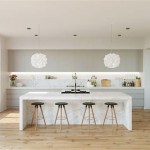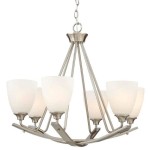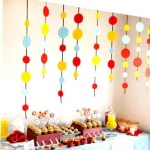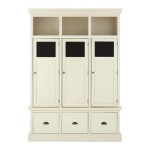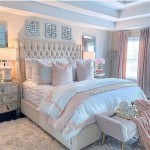Moroccan Style House Decor: A Guide to Incorporating Exotic Elegance
Moroccan style house decor is characterized by its vibrant colors, intricate patterns, luxurious textures, and a general atmosphere of warmth and hospitality. Drawing inspiration from Berber, Arab, and European influences, Moroccan design creates spaces that are both visually stunning and functionally comfortable. This article explores the key elements of Moroccan decor, providing insight into how to effectively integrate this aesthetic into various areas of a home.
The appeal of Moroccan decor lies in its ability to evoke a sense of exoticism and opulence without sacrificing comfort. It is not simply a matter of using specific colors or objects; rather, it is about creating a holistic environment that stimulates the senses and fosters a feeling of tranquility. Effective implementation involves careful consideration of color palettes, material choices, lighting, and the arrangement of furniture and accessories.
Key Elements of Moroccan Color Palettes
Color plays a crucial role in defining the ambiance of a Moroccan-inspired space. The traditional palettes often incorporate rich, saturated hues reminiscent of the desert landscape, the Mediterranean Sea, and the vibrant marketplaces. Deep reds, oranges, yellows, and blues are commonly used, often in combination with neutral tones to create balance and visual interest.
Red, a symbol of passion and vitality, is frequently seen in Moroccan textiles, rugs, and decorative accents. Its warmth adds a sense of energy to the room. Orange and yellow, reflecting the sun and sand of the Sahara, contribute to a feeling of warmth and optimism. These colors can be used in wall paint, upholstery, or smaller decorative items.
Blue, inspired by the Atlantic Ocean and the Mediterranean Sea, provides a cool and calming contrast to the warmer tones. It is often used in tilework, textiles, and paint to create a sense of serenity. Variations of blue, such as turquoise and indigo, add depth and complexity to the color scheme.
Neutral colors, such as beige, cream, and white, serve as a backdrop for the bolder hues, preventing the space from feeling overwhelming. These neutral tones can be used on walls, floors, and larger pieces of furniture. The strategic use of these colors allows the more vibrant accents to stand out without creating visual chaos.
Metallic accents, particularly gold and silver, are also integral to Moroccan decor. These metals are often incorporated into lighting fixtures, mirrors, and decorative objects, adding a touch of luxury and sophistication. The shimmer of metallic surfaces reflects light, enhancing the overall brightness and vibrancy of the room.
Intricate Patterns and Textures
Moroccan design is renowned for its intricate patterns and textures, which add depth and visual interest to the space. Geometric motifs, arabesques, and floral designs are commonly used in tilework, textiles, and carved wood. These patterns are not merely decorative; they often carry symbolic meanings and reflect the rich cultural heritage of Morocco.
Zellij, a type of mosaic tilework consisting of individually hand-cut geometric tiles, is a hallmark of Moroccan architecture and design. Zellij tiles are often used to adorn walls, floors, and fountains, creating intricate patterns that are both beautiful and durable. The variations in color and the subtle imperfections in the handmade tiles add to the unique character of each piece.
The use of textiles is another essential aspect of Moroccan decor. Rugs, carpets, cushions, and throws are often made from natural materials such as wool, cotton, and silk, and are adorned with intricate patterns and vibrant colors. These textiles add warmth, comfort, and visual interest to the space.
Berber rugs, known for their thick pile and geometric designs, are particularly popular in Moroccan-inspired interiors. These rugs are handwoven by Berber artisans and often feature distinctive patterns and colors that reflect the traditions of their respective tribes. They provide a soft and comfortable surface underfoot and add a touch of authenticity to the room.
Carved wood is another prominent element of Moroccan decor. Intricate carvings are often found on furniture, doors, and screens, adding a sense of craftsmanship and artistry to the space. The carvings may feature geometric motifs, floral designs, or Arabic calligraphy, reflecting the diverse cultural influences that have shaped Moroccan art.
The layering of textures is also crucial in creating a visually rich and engaging Moroccan-inspired space. Combining smooth surfaces, such as polished tiles, with rough textures, such as woven rugs and textured walls, adds depth and complexity to the design. The contrast between different textures stimulates the senses and creates a more dynamic and inviting environment.
Furniture and Accessories: Creating the Moroccan Atmosphere
The selection and arrangement of furniture and accessories are vital in creating an authentic Moroccan atmosphere. Low seating, ornate metalwork, and the use of natural materials are characteristic features of this style. The goal is to create a comfortable and inviting space that encourages relaxation and socializing.
Low seating, such as floor cushions and low sofas, is a traditional element of Moroccan decor. These seating arrangements encourage a more relaxed and informal atmosphere, perfect for socializing and entertaining. Floor cushions can be adorned with colorful textiles and intricate embroidery, adding to the visual appeal of the space.
Coffee tables, often made of intricately carved wood or metal, are another essential piece of furniture in Moroccan-inspired interiors. These tables are typically low to the ground and are used for serving tea, coffee, and other refreshments. They can also be adorned with decorative objects, such as candles, trays, and bowls.
Lighting plays a crucial role in creating the ambiance of a Moroccan space. Ornate metal lanterns and lamps, often adorned with intricate cutouts and colored glass, cast intricate patterns of light and shadow, adding to the exotic and romantic atmosphere. The use of warm, diffused lighting creates a sense of intimacy and relaxation.
Mirrors, often framed with ornate metalwork or carved wood, are used to enhance the sense of space and light in the room. Mirrors can be strategically placed to reflect light from windows and other sources, making the room feel brighter and more airy. They also add a touch of elegance and sophistication to the decor.
Plants and greenery are also integral to Moroccan decor. Potted plants, such as palm trees, ferns, and succulents, add a touch of natural beauty and freshness to the space. They can be placed in corners, on shelves, or in decorative planters, adding to the overall sense of tranquility and well-being.
Accessories such as decorative trays, bowls, and vases, often made of intricately patterned ceramic or metal, add the finishing touches to a Moroccan-inspired space. These accessories can be used to display flowers, fruit, or other decorative objects, adding to the visual appeal of the room. The key is to choose accessories that complement the overall color scheme and design aesthetic.
By incorporating these key elements – vibrant colors, intricate patterns, luxurious textures, and carefully chosen furniture and accessories – it is possible to create a Moroccan-inspired space that is both visually stunning and functionally comfortable. The result is an environment that evokes a sense of exoticism, warmth, and hospitality, making it a truly inviting and enjoyable place to be.

Moroccan Interior Design Ideas For Your Home Designcafe

Moroccan Interior Design Ideas For Your Home Designcafe

Moroccan Style Interior Design
:max_bytes(150000):strip_icc()/4-tips-for-buying-the-perfect-moroccan-rug_1000x-8e7612ad47c544cdaab48d9cc6d2dd3d.jpeg?strip=all)
11 Moroccan Inspired Decor Ideas

10 Best Moroccan Decor Design Ideas In 2025 Inspired

Moroccan Style Interior Design

Moroccan Interior Design Ideas For Your Home Designcafe

Moroccan Living Rooms Ideas Photos Decor And Inspirations

Moroccan Style Interior Design

Moroccan Interior Design Ideas For Your Home Designcafe
Related Posts

